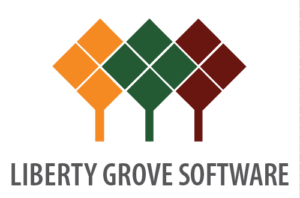Microsoft Dynamics NAV vs. Microsoft Dynamics 365 Business Central

Here we will compare and contrast Microsoft Dynamics NAV (NAV) and Microsoft Dynamics 365 Business Central (BC). The way you view it will depend on your point of view (e.g., current NAV user, current Microsoft Dynamics GP user, new to BC…). Also, we will explore the options for deployment.
The differences are broken up into areas, and we will dig into each area in turn.
Deployment Options
With the advent of BC, the ability to deploy to the public cloud has become a viable option. As organizations look forward and plan their future with BC, they can consider the possibilities of on-premise, private cloud (platform as a service) or public cloud.
Traditionally, companies purchased hardware and on-premise licenses for NAV (and other ERP systems), which worked well. Still, a lot has changed over the past few years (improved internet speeds and reliability, move to virtual servers, drive to reduce IT management costs…). Options today allow you to run BC directly from the cloud with the exact number of licenses you need and access without installing software, servers…
User Interface Options
While the Modern Client (aka Web Client) has been available for several years, it has evolved significantly in the past couple of years and is the only option available today. There are versions of the Modern Client available for phones and tablets, known as the Phone Client and Universal Client, respectively. With the 2019 Wave 2 (aka fall release or version 15), the Windows Clients (aka Role Tailored Client) was retired. The things that were helpful for users (e.g., live tiles, personalization, shortcuts, Outlook Integration) are still available plus the added benefits of the other Dynamics 365 tools (PowerBI, PowerAutomate…).
Extended Feature Options
In the early 2000s, organizations and partners built customizations to handle unique requirements. This lead to the creation of moderately to highly modified solutions. Often there were similarities in requirements from one organization to another, but each ended up with their own customizations. There has been an evolution of how to extend functionality now; repeatable solutions are built as Apps and licensed to multiple companies. This allows an organization to install an App (and avoid customization) to meet their requirements. To support this change, Microsoft has changed the development environment and moved from C/AL to AL. This architectural change has provided several benefits ranging from a modern development environment, ease of creating automated tests, ease of managing code and versions, and ways to extend tables and pages. Furthermore, the creation of Apps (along with supporting information) has allowed Microsoft to setup Appsource, so you can find download, test drive, and subscribe to the App.
If you still require customizations, using any of the deployment options, then a private extension can be created and published to provide you with the exact functionality you require.
With any of the App options, private or Appsource, you still need to complete your due diligence to ensure that the code will be available in the event that the creator stops supporting it.
Moving to Business Central
You have several options about how to move to BC; this will focus on organizations that are currently using NAV or GP. The first thing to identify is your type of deployment. There are of several factors that you may want to consider, such as how critical your ERP is to your daily operations.
On-Premise (Purchase or Subscription)
If you have a completely integrated solution with manufacturing (e.g., interactive label printing and output posting), then you may want to have an on-premise solution to eliminate external connectivity as a risk to daily operations. Also, if your facility is located in an area of poor internet connectivity that may also drive you towards an on-premise solution.
Private Cloud
If you want to outsource your hardware and/or infrastructure, a private cloud environment allows you to have access and/or control that is not available with a Public Cloud deployment. You can configure an environment to meet your specific requirements. It does, however, depending on the service level agreements, reduce your agility to make updates.
Public Cloud
If you want to have a scalable solution (e.g., to deal with seasonality) or the ability to use and forget about the backend details, then the public cloud offers a great opportunity.
What to Learn More...
Talk to the Microsoft Dynamics experts at . Call us at 630-858-7388 or email us at
nav@libertygrove.com.
